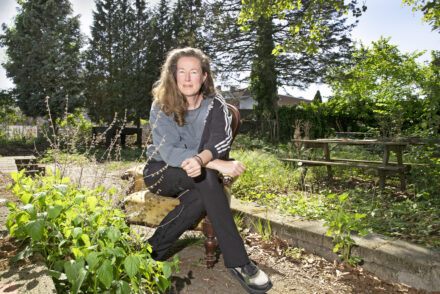Brabant Student Guild: vacations have (almost) started so we get to work
In the Telling History column, we take a dive into Tilburg University’s rich Heritage Collections. This time, Ad van Pinxteren, information specialist at the Brabant Collection, tells how the members of the Brabant Student Guild spent their vacations building chapels and solving regional problems.

Summer is just about to start, and Tilburg University is partially entering pause mode again. Students are temporarily turning their backs on the university to spend their vacations at home (or in faraway places). The contact with Tilburg seems to be broken for about two months. The history of the Brabant Student Guild (BSG; in Dutch) shows a reverse movement at the beginning of the summer vacations.
Back to North Brabant
During the 1926 Brabant Convention in Oirschot, two Delft students founded the Brabant Student Guild of Our Lady (Onze Lieve Vrouw). It was intended for Brabant students enrolled at any university. They returned in large numbers to their parental homes somewhere in North Brabant during the summer months. Every year the Guild organized a summer activity in a different Brabant village with the aim of promoting contact between the Catholic Brabant students and the local population. This would, in fact, benefit the performance of the social roles and tasks that the educated would play (often in their own region) after completing their studies.
The program of a convention had a number of fixed components: a Holy Mass, flag waving by the marksmen’s guild, a meal, and a festive speech. The first time this was given by Dr. P.C. de Brouwer (1874-1961, in Dutch). This priest contributed much to the emancipation of North Brabant and the enhancement of its self-awareness.
The opening of the Tilburgse Hogeschool (precursor to Tilburg University) in 1927 meant a boostfor the Student Guild. Initially, the Catholic background played an important role in the functioning of the BSG. Around 1930, two priests became active within the BSG and caused a conflict of directions: the preacher Raymundus van Sante and Frans Siemer (in Dutch), priest and member of the Brothers of Our Lady Mother of Mercy (Fraters van Tilburg, in Dutch). It went so far that the followers of the former dropped out of the Guild after a few years.
Building chapels
Priest Frans Siemer (1887-1966) played a distinguished role in the Student Guild. Furthermore, he was a good friend of Jos. Bedaux (1910-1989, in Dutch), the architect known for a number of buildings on the Tilburg University campus. Siemer encouraged Bedaux to continue in architecture at the beginning of his career. Through his contact with Siemer, Bedaux was also able to become a member of Sint-Leonardus, the student association of the Catholic College (Katholieke Leergangen) in Tilburg. There, he met Frans van de Ven (1907-1999). He was one of the founders of Brabantia Nostra (in Dutch), a movement related to the BSG that worked to strengthen the Brabant identity. As a full professor in Tilburg, Van de Ven played an important role in the choice of architects for the new building on the sites of the (then) Hogeschool Tilburg.
Bedaux also joined the Brabant Student Guild of Our Lady in 1933. That was also the first year that a chapel was built by the participating students in the place where the summer camp was held. The design of this chapel, in Huijbergen, was drawn by Jos. Bedaux. In the years that followed, even during the Second World War, Guild Chapels (Gildekapellen) were built in about fifteen places, always based on a design by Bedaux.
Solving Brabant’s problems
After World War II, the summer camp was given a new interpretation: it became a sociographic work camp. The participating students conducted local research by means of surveys, among other things, in order to gain insight into specific problems in Brabant. These were local and regional issues, such as the state of prosperity (or the perceived backwardness of Brabant) and the way in which the middle class functioned. As future intellectual leaders of Brabant, the students could contribute to the solution of these problems.
The activities of the BSG came to a standstill in the following decades, and Tilburg lost the central position it had held for many years. In 1973, however, the BSG was revived, from Wageningen. It is from here that the Brabant Student Guild (in Dutch) still organizes activities today, and not only in the summer months.
The Brabant Collection (in Dutch) and also the central collection of the University Library contain a lot of material where more information can be found about the Brabant Student Guild and the people who were involved: images, but especially books (including lustrum collections) and articles.
The Telling History section contains reports on Academic Heritage, on the Heritage Collections of the University Library (LIS), and on the Brabant Collection, owned by the Province of North Brabant and housed at the Tilburg University Library for many years now.
Want to know more about Tilburg University’s various collections? Look here.






